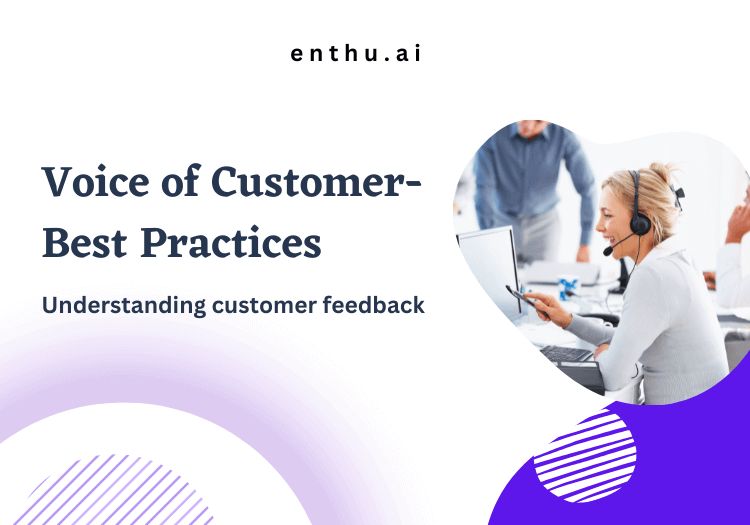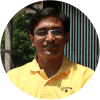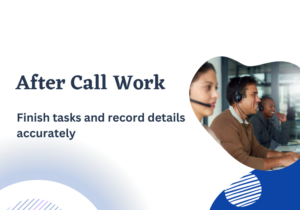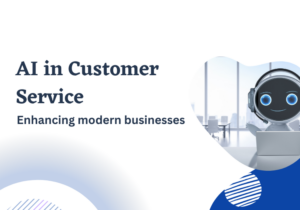They say the customer is always right.
In 2024, customers aren’t just right; they’re like the rulers in the business world. According to a recent study, 81% of organizations see CX as a competitive differentiator.
That’s right – a whopping 81%! Why?
Because they know that customer experience with their brand matters more than ever. Customer satisfaction, their loyalty, and yes, even their occasional complaints – it’s all important.
Nowadays, harnessing the power of customer feedback has evolved into sophisticated practices, thanks to several types VoC tools,
from conversation intelligence to speech analytics to call monitoring technologies.
But that’s not enough. If you’re looking to invest in VoC technologies in 2024, you must know its best practices to leverage all the benefits.
In this article, we’re sharing the 12 most influential voice of customer best practices, shaping the landscape of customer-centric strategies.
In this guide, you’ll find:
- Voice of customer best practices
- How is the VoC changing?
A.Voice of customer best practices
Remember, these practices aren’t just for customer service teams; they’re for everyone who cares about making customers happy.
Following these practices will create a customer experience that shines, keeping your customers loyal and satisfied.

1. Alignment with business objectives
Understanding how VoC insights align with business goals ensures that customer feedback is not only collected but also effectively used to drive your organization’s success.
This involves:
Linking VoC Insights: Make sure that customer feedback is linked to the main goals and plans of the business. This way, the improvements directly relate to what the company wants.
Strategic Focus: Focus on the parts of the business that affect earnings, customer loyalty, and market reputation to use resources effectively.
Feedback Integration: Use the feedback from customers to help make decisions, create new products, and improve services.
2. Comprehensive data collection
Gathering feedback from a diverse range of communication channels provides a comprehensive understanding of customer sentiments and preferences.
This involves:
Multichannel strategy: Using phone, chat, email, social media, and other relevant platforms to capture feedback across various touchpoints.
Data consistency: Ensuring a consistent approach to customer data collection across channels so no valuable insights are missed due to channel-specific biases.
3. Real-time feedback collection
Getting feedback right after customers interact with you gives the best insights and information you can use.
This means asking them right away while they still remember everything well.
It helps you know exactly what they think.
Getting fresh information: Asking while the experience is still fresh gives you accurate and detailed feedback.
Avoiding mistakes: It stops you from getting things wrong because of forgetting or feeling differently later.
Fixing problems fast: If something’s wrong, you can find out quickly and fix it, so things don’t get worse.
4. Customer-centric metrics
Measuring key customer-centric metrics helps you understand how happy customers are and how loyal they feel.
This includes:
CSAT (Customer Satisfaction): Checking how happy customers are with specific things they experienced, like talking to you customer service agents or using your products or services.
NPS (Net Promoter Score): Seeing if customers are enough to tell others about your company/products, which shows they’re loyal.
CES (Customer Effort Score): Figuring out how easy it is for customers to do things with you, like getting help or fixing problems.
5. Multi-channel listening
Monitoring customer sentiment across various communication channels provides a holistic view of customer interactions and a well-rounded understanding of customer experiences.
Try these:
360-degree perception: Gain insights into how customers perceive the brand across different channels.
Holistic feedback: Collect feedback from both traditional and digital channels to get the whole picture.
Consistent quality: Maintain consistent service quality and experience across all channels.
6. Empower frontline agents
Providing your customer care agents with the necessary authority and tools helps you enhance their ability to address customer concerns effectively.
This helps call center agents in the following ways:
Autonomy: Allowing agents to make decisions and resolve issues in real time, minimizing customer frustration and churning.
Knowledge base: Equipping agents with up-to-date information and resources to address a wide range of inquiries.
Training: Providing call center agents training to make sure they become experts in customer service skills, conflict resolution, and product knowledge.
7. Analytical tools
Implementing advanced analytics tools helps process and make sense of the large volumes of collected feedback.
This includes:
Big data processing: Utilizing analytics to look at large datasets, identifying patterns, trends, and strange things.
Predictive insights: Leveraging customer data to predict future customer behaviors, preferences, and potential issues.
Data visualization: Creating easy-to-understand visual representations of insights, aiding decision-makers in understanding complex data.
8. Root cause analysis
Digging into the underlying reasons for common customer issues enables targeted solutions.
Here are some ways to do root cause customer analysis for VoC:
Problem understanding: Going beyond surface-level symptoms to identify the fundamental causes of recurring issues.
Preventive measures: Implementing changes that address the root cause, preventing future occurrences of similar problems.
Continuous improvement: Incorporating feedback analysis as part of an ongoing improvement process.
9. Continuous training and coaching
Regularly training and coaching your agents ensure their skills align with evolving customer expectations.
This is how you can do this:
Soft skills development: Enhancing communication, empathy, and active listening skills to foster positive communication.
Problem-solving: Providing techniques for effective issue resolution and handling difficult customer situations.
Adaptability: Equipping agents to solve new challenges and scenarios as customer preferences change.
10. Cross-functional collaboration
Collaboration between different departments enables a comprehensive approach to addressing customer concerns and enhancing experiences.
This involves:
Information sharing: Regularly sharing customer insights and feedback between contact centers, marketing, and product teams.
Synergy: Leveraging diverse expertise to create complete solutions that address complex problems.
Unified strategy: Aligning efforts across departments to ensure a consistent brand experience across all channels.
11. Prompt issue resolution
Prioritizing the swift resolution of customer complaints stops them from getting worse and making customers even more unhappy.
To act fast to fix customer issues, you should focus on:
Service recovery: Addressing issues promptly and effectively to regain customer trust and loyalty.
Communication: Keeping customers informed about the status of their concerns and the steps being taken to resolve them.
Feedback loop: Learning from customer complaints to implement systemic changes that prevent similar issues in the future.
12. Trend analysis
Identifying recurring issues and opportunities through consistent feedback analysis enables proactive improvements.
Here’s how you can implement this:
Data mining: Identifying patterns and recurring themes from accumulated feedback data.
Strategic planning: Using insights to plan targeted improvements and innovations that align with customer needs.
Feedback loop closure: Demonstrating responsiveness to customer suggestions by implementing meaningful changes based on their feedback.
B. How is the VoC changing?
Over the years, the way companies gather and interpret the voice of the customer has evolved significantly due to technological advancements and changing customer behaviors.
Some general trends in how the voice of the customer is changing include:

1. Multichannel feedback
Customers now have various platforms to express their opinions, including social media, online reviews, surveys, and direct interactions.
This multichannel feedback provides a more integrated view of customer sentiments and requires companies to monitor and analyze customer data from diverse sources.
2. Real-time interaction
Customers expect faster responses, leading to an increased demand for real-time interaction.
Companies need to be agile in addressing customer concerns promptly, particularly on digital platforms.
3. Personalization
Customers appreciate personalized experiences. Gathering and understanding customer feedback allows companies to tailor their offerings and interactions to match individual preferences.
4. Emphasis on emotional insights
Companies are now focusing on understanding the emotional aspects of customer feedback.
Analyzing sentiments and emotions expressed by customers provides deeper insights into their experiences and perceptions.

5. Predictive insights
Advanced analytics techniques allow companies to predict customer behavior and preferences based on historical customer data.
This enables proactive decision-making and targeted strategies.
6. Inclusion of unstructured data
Much of the feedback today is in the form of unstructured data, such as text comments, voice recordings, and images.
Extracting meaningful insights from this data requires advanced natural language processing (NLP) and image recognition technologies.
7. Global perspectives
With the rise of e-commerce and globalization, companies are dealing with a more diverse customer base. Understanding cultural nuances and catering to different preferences is crucial.
Besides, automated tools have played a significant role in transforming how the voice of the customer is collected and analyzed.
One such innovative tool in this domain is Enthu.AI, which specializes in call monitoring, speech analytics, quality assurance, and many other interesting features.
Enthu.AI is the best call center software that uses many cutting-edge techniques and technologies such as conversation intelligence, to process and analyze spoken interactions between customers and customer service representatives.
Enthu.AI can help you in:
1. Call monitoring

Enthu.AI’s call monitoring feature involves recording and capturing interactions between customers and agents. This allows companies to gain valuable insights from real-time conversations.
2. Transcribe conversations
Enthu.AI’s call transcription features transcribe spoken conversations into text, making it easier to analyze and extract insights from customer interactions.
3. Analyze sentiments
The tool can determine the sentiment of both customers and agents during a call, providing an understanding of the emotional tone of the conversation.
Green- happiness and satisfaction / Red- dissatisfaction and anger.
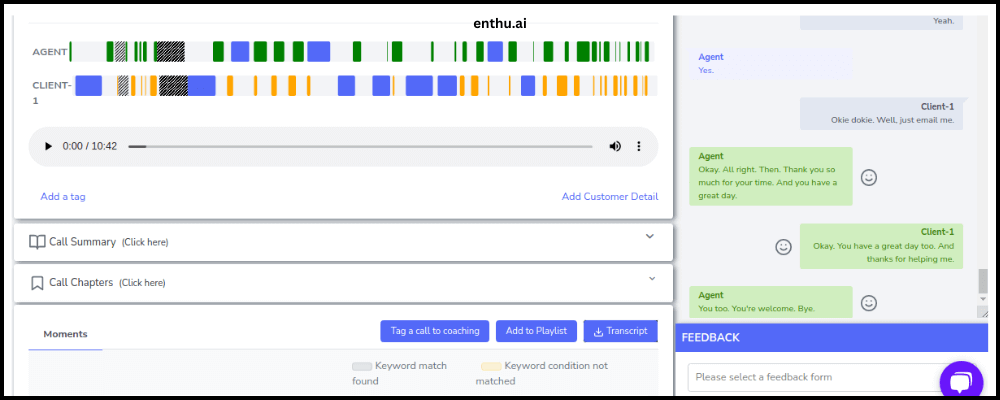
4. Identify Trends
Enthu.AI can identify recurring keywords, topics, and issues customers mention, helping companies discover trends and pain points.
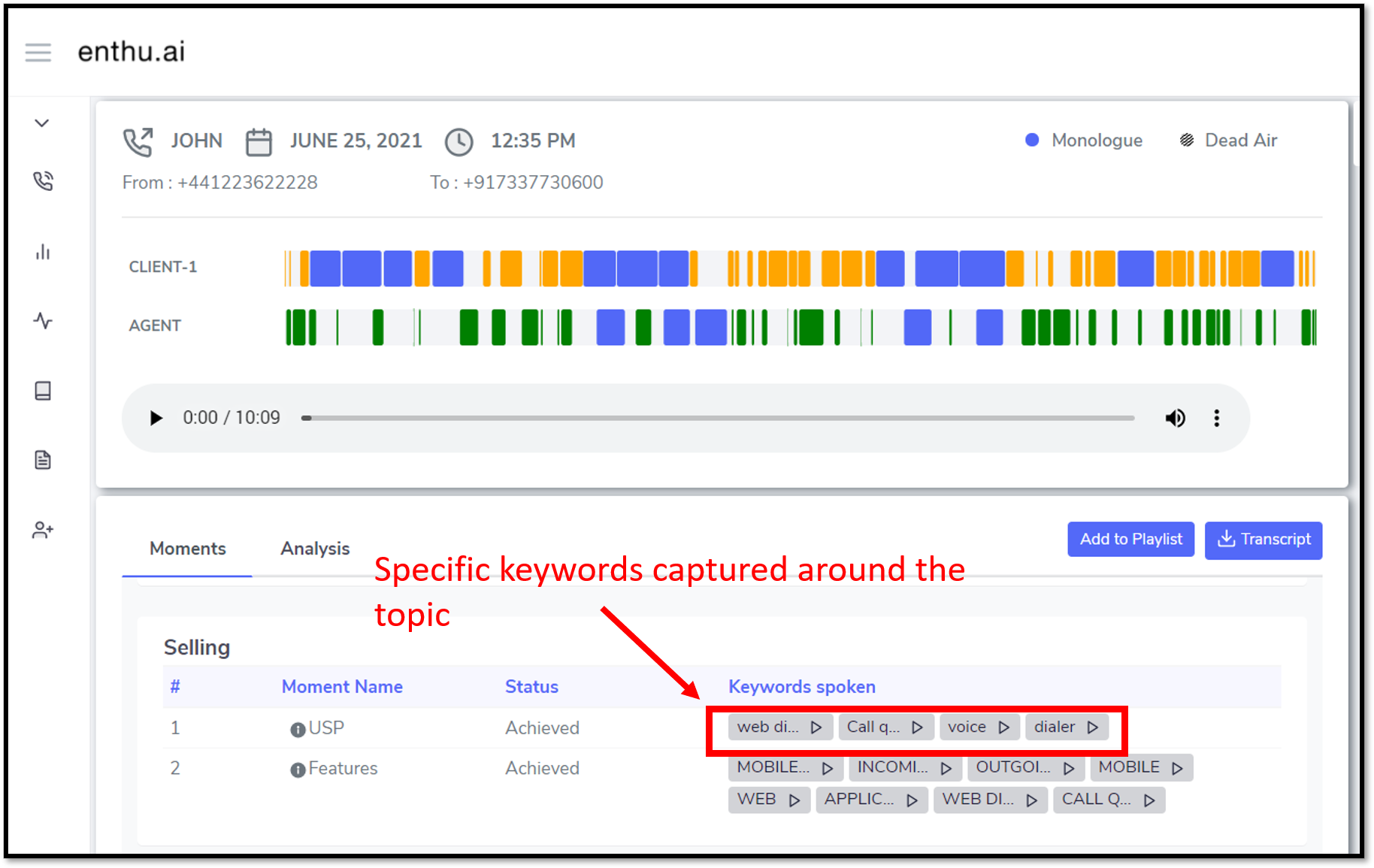
5. Quality assurance
The tool can assess the quality of interactions by analyzing factors like call duration, customer satisfaction levels, and adherence to scripting.
6. Agent training
Insights from Enthu.AI can be used to train customer service agents, helping them understand customer needs better and improve their communication skills.

Incorporating tools like Enthu.AI allows companies to gain valuable insights from customer interactions that were previously challenging to analyze at scale.
These tools contribute to a more data-driven approach to understanding the voice of the customer, enabling companies to make informed decisions that enhance customer experiences.
Conclusion
In 2024, Voice of Customer best practices have evolved into a sophisticated blend of technology and human-centric strategies.
Organizations that embrace these practices are poised to create exceptional customer experiences, gain a competitive edge, and drive long-term customer loyalty.
By following these above voices of customer best practices, companies, and call centers can truly supercharge their Customer Experience (CX) strategy.
As the customer landscape continues to evolve, organizations that remain committed to VoC excellence are better positioned to thrive.
FAQs
Q.1. Why is real-time feedback collection important?
Real-time feedback collection ensures that customer insights are fresh and accurate, reducing the chances of biased or distorted perceptions that can occur with delayed feedback.
Q.2. How do analytical tools enhance VoC practices?
Analytical tools efficiently process large volumes of data, identifying trends, sentiments, and patterns that inform strategic decisions and improvements.
Q.3. What role does cross-functional collaboration play in VoC?
Cross-functional collaboration ensures that VoC insights are leveraged across various departments, resulting in more comprehensive and impactful enhancements to products, services, and customer experiences.
